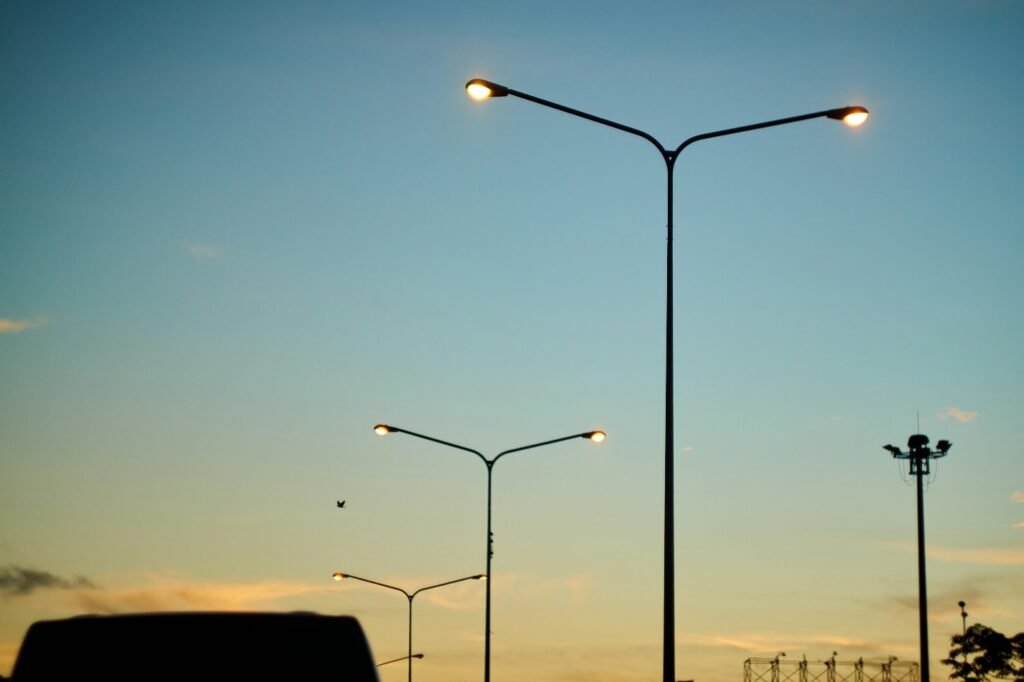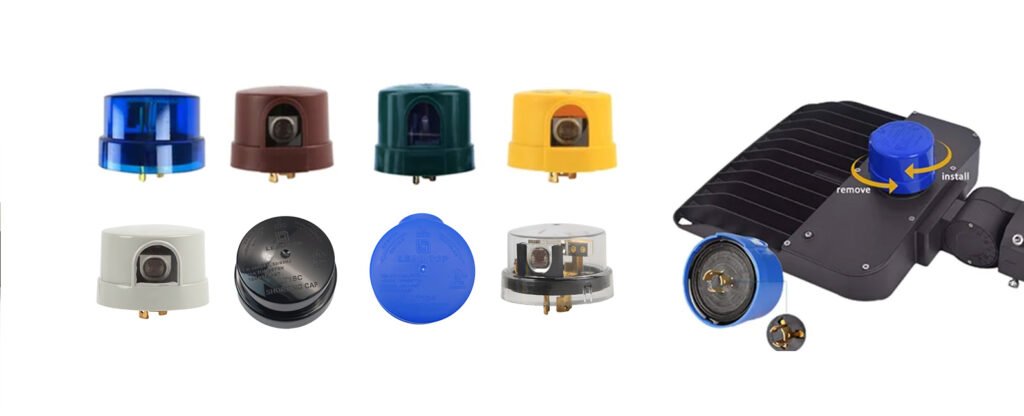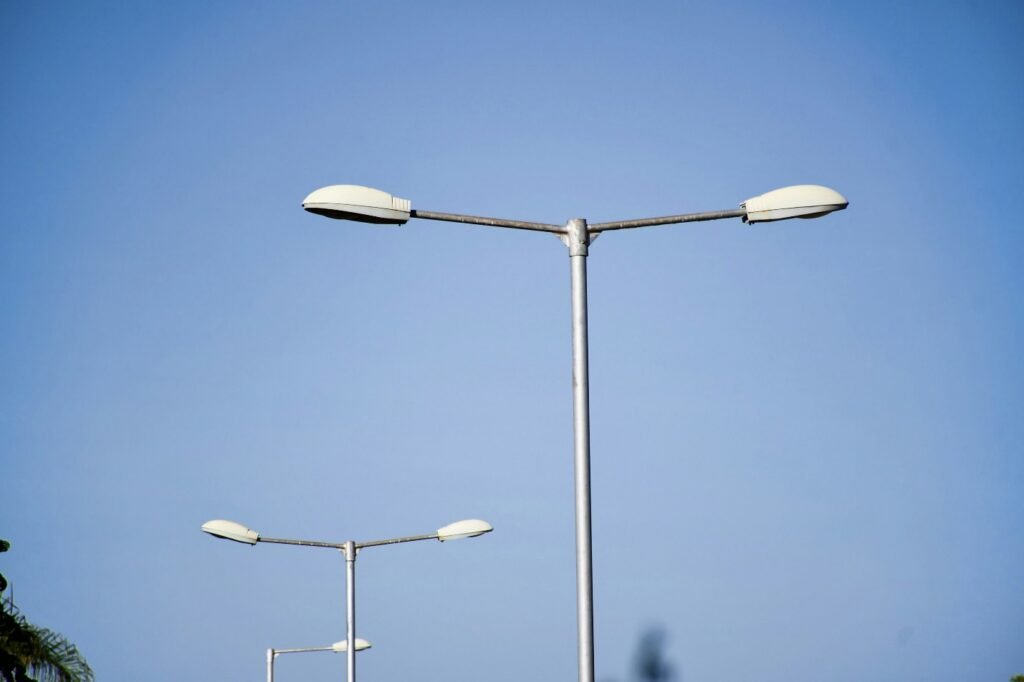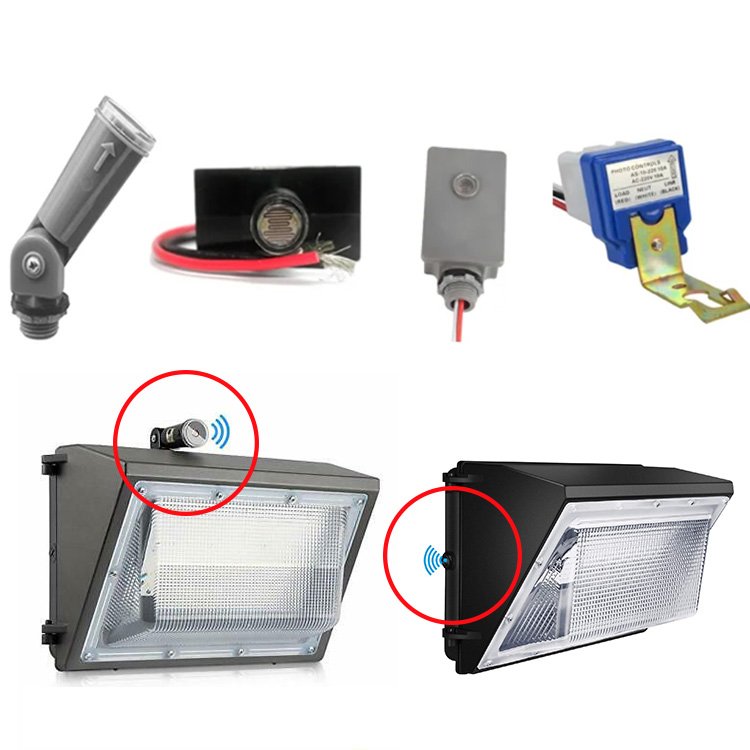In modern cities, streetlights aren’t just lights, they’re smart infrastructure, Selecting the right photocell sensor is critical for consistent operation, energy savings, and long-term lighting efficiency, Whether you’re managing municipal lighting or outfitting a smart city project, knowing your options helps you choose wisely.
At Lead-Top, we specialize in engineering globally certified photocell solutions designed for diverse outdoor environments, This guide walks you through the most popular types and highlights features for decision-making.
Common Types of Photocells Used in Streetlights

Twist-Lock Photocells (ANSI C136.10 / C136.41)
These are the widely used sensors in street lighting systems today:
- Installed via 3-pin, 5-pin, or 7-pin NEMA bases
- Enable easy plug-and-play replacement
- Fully compatible with LED drivers and smart city lighting networks
- Best for municipal use, parking lots, walkways, and public parks
Twist-lock models are preferred. If a sensor fails, it can be replaced without rewiring or removing the entire fixture. This helps reduce labor time and increases service efficiency. These are also great, where routine maintenance is costly and difficult.
Explore Lead-Top models: LT124, LT134, LT154, En LT154E
https://leaditop.com/twist-lock-photocontrollers/

Part-Night Photocells
Part-night photocells offer an advanced control strategy that balances energy efficiency with public safety, Instead of keeping lights on all night, these sensors:
- Operate lighting during peak night hours and reduce output or shut off later
- Great for low-traffic zones, streets, and eco-sensitive areas
- Reduce energy use without compromising early-night visibility
These are practical in towns or neighborhoods where full-night illumination isn’t required. By decreasing power usage during post midnight, municipalities can reduce electricity bills and promote Eco-friendliness. It also helps reduce light pollution which is a concern in environmentally conscious regions.
Part-night systems are also seen as a middle-ground between full automation and basic on/off control. They allow for public lighting coverage during peak hours (when visibility and safety are most critical), then scale back output in the early morning hours to conserve resources.
Smart / Programmable Photocells (ANSI C136.41, 7-pin)
Smart photocells, also referred to as programmable photocells are advanced sensors that go far beyond basic dusk-to-dawn functionality and are built to integrate with the Internet of Things (IoT) and smart city infrastructures, These photocells are designed for intelligent lighting systems:
- Enable IoT-based control, remote scheduling, and real-time diagnostics
- Compatible by 0–10V dimming and DALI systems
- Support features like energy usage monitoring, status reports, and adaptive dimming
- Used in smart city infrastructure where centralized control is critical
Smart photocells offer cities a leap toward digital transformation, They provide city planners the ability to monitor lighting networks remotely, receive alerts, and fine-tune energy usage through central dashboards. This level of control supports predictive maintenance and smarter budgeting for public works departments.
Moreover, programmable photocells contribute to sustainable urban development by aligning lighting behavior with actual environmental conditions. This not only lowers carbon emissions and electricity usage but also contributes to certifications like LEED or Smart City rankings.
Lead-Top also provides Zhaga Book 18 and NEMA 7-pin solutions
Compare photocells vs timers
Waarom kiezen voor lood-top fotocellen?
Lead-Top fotocellen are built for performance, durability, and integration. All units are designed to meet international standards, support long-life LED systems, and ensure stable lighting control under all weather conditions.
Our advanced photocells use zero-crossing switching technology to minimize inrush currents that typically damage LED drivers, This enhances the reliability of your fixtures and also prolongs the lifespan of your lighting system. Whether you’re operating in urban, coastal, or industrial areas, Lead-Top sensors are optimized for harsh outdoor environments.
| Model | Standard | Type | Belangrijkste kenmerken |
| LT124 | ANSI C136.10 | 3-Pin Twist | Economical, fast response, pre-calibrated lux setting |
| LT134 | ANSI C136.10 | Phototransistor | Supports 8A LED loads, zero-crossing, 10kV–20kV surge protection |
| LT154 | ANSI C136.10 | Zwaar uitgevoerd | 30A max, IP66 rated, 10-year warranty, Fail Mode ON |
| LT100 | ANSI C136.41 | 7-Pin Smart | DALI/0–10V dimming, IP67, surge protection 640J /10KV/6KA |
| Zhaga Series | Book 18 | 4-Pin Compact | Tool-free mount, smart driver ready, ideal for compact smart fixtures |
All models undergo IP66/IP67, UV, salt spray, and aging tests making sure long-term performance even in harsh outdoor environments, The combination of high-quality components, protective housing, and factory-tested lux thresholds make them a great choice for any outdoor lighting scenario.

Which Photocell Should You Choose?
Here’s a quick guide based on your project needs:
| Gebruiksscenario | Recommended Model | Reden |
| Standard LED streetlights | LT124, LT134 | Easy installation, robust protection |
| Heavy-load or industrial areas | LT154 | Handles high inrush current, long warranty |
| Smart city or dimmable systems | LT100, Zhaga Series | Remote control, DALI/0–10V support, smart-ready |
| Green zones/low-energy areas | Part-Night Photocells | Saves energy while maintaining basic coverage |
Choosing the right photocell sensor depends on multiple factors, such as power grid stability, ambient lighting patterns, network integration, and environmental impact goals. Lead-Top’s engineering team works with clients to provide tailored recommendations based on these inputs, No two cities are the same, and your lighting system shouldn’t be either.
Choosing wrong sensor type may lead to waste of energy, reduced LED performance, or expensive maintenance. It’s important to examine environment and the surrounding infrastructure of your lighting system before making any decision.
For large projects or smart city planning, it’s also important to future-proof your investment, Choosing models with IoT integration, smart dimming, and cloud-based diagnostics can offer long-term savings and operational visibility. Lead-Top’s certified smart photocells are built with exactly that foresight in mind.
Lead-Top: Your Trusted Photocell Partner
With over 5 million units shipped annually, Lead-Top offers:
- Wereldwijde certificeringen
- Custom solutions
- Snelle levering
- 100% testing
Our team understand needs of lighting contractors and urban planners. We know timelines matter, budgets must be met, and performance can never be compromised. Every photocell sensor we ship is tested for real-world conditions, and backed by responsive technical teams.
From highways and historic districts to industrial parks and smart campuses our photocells light the way for thousands of projects worldwide. Whether you’re upgrading traditional fixtures or new infrastructure, Lead-Top gives future ready solutions.
Need help choosing right sensor for your project?
Connect with our experts at www.leaditop.com and make your lighting smarter today.
Referenties






